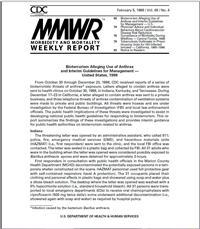This report describes the investigations of two TB outbreaks that occurred in two state correctional institutions with dedicated HIV housing units. In each outbreak, IS6110-based DNA fingerprinting of Mycobacterium (MTB) isolates linked all cases. During the 4-month intervals between identification of the two male index case-patients, one of whom later died of miliary TB, and chest radiograph screening of all the contacts remaining in the housing unit, 190 inmates had been released. Of 56 who were reincarcerated before they had had health evaluations in the community, follow-up information was available for eight; none had TB disease, and six accepted preventive therapy. The remaining 134 were referred to 22 local health jurisdictions. Of these 134, 76 were assessed; nine had culture-positive TB, each with the same outbreak strain of MTB as found in the originating prison. Among prison employees who had contact with case-patients, tuberculin skin test conversions occurred in 20 of 542. Findings indicate that MTB can spread rapidly among HIV-infected inmates and be transmitted to their visitors and prison employees, with secondary spread to the community. Containment in these two cases required efforts of correctional and health department staff at the State and local levels. It is recommended that HIV-infected inmates with new radiographic abnormalities consistent with TB are placed in respiratory isolation, reported to the local health department and the central public health system of the prisons as having suspected TB, and started on multidrug therapy for TB even when another pulmonary process is diagnosed. Further recommendations for changes to policies and procedures for managing possible TB cases and their contacts in correctional facilities and the community are presented.
- TB
- HIV and AIDS
- Correctional Facilities/Agencies
- TB Prevention


